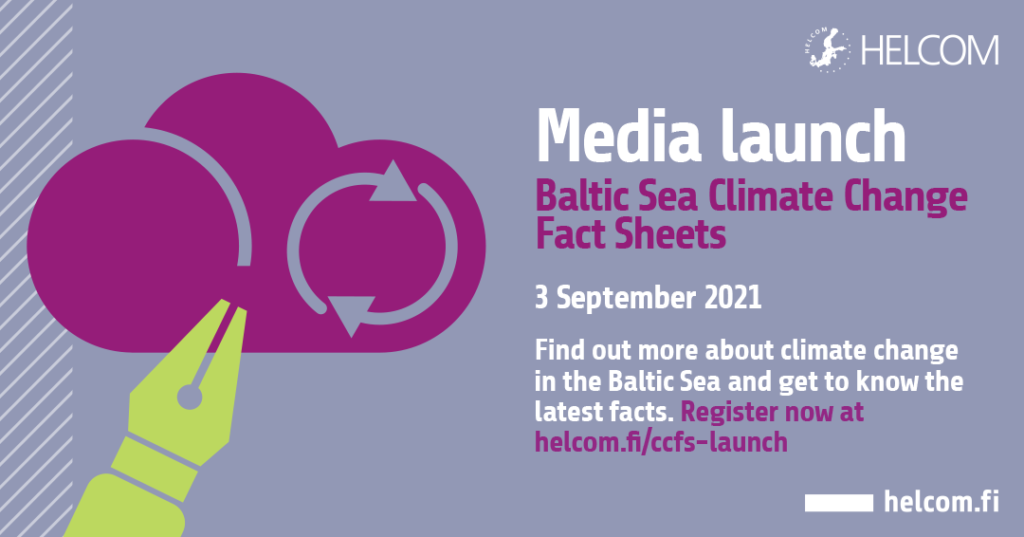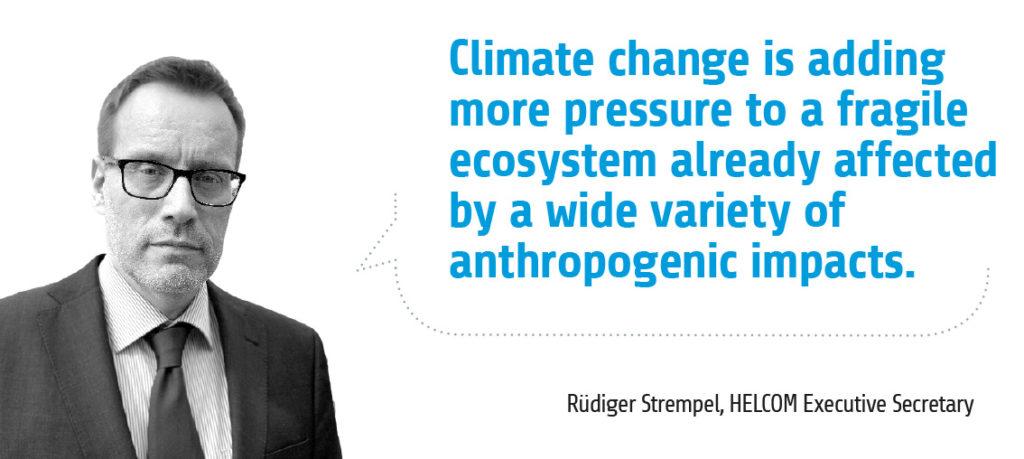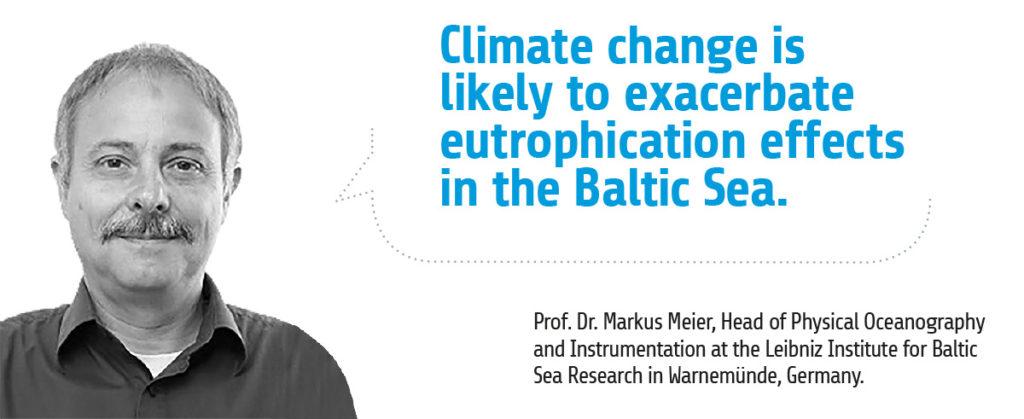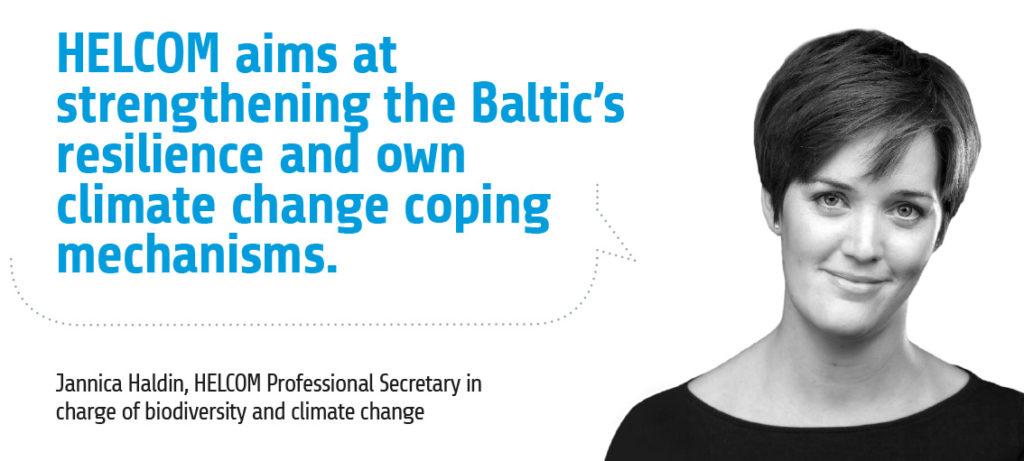
In a bid to improve our understanding of climate change in the Baltic Sea and identify regional solutions to a global emergency, an international conference will be held online from 9 to 10 March 2022 – the HELCOM Stakeholder Conference 2022 on Climate Change in the Baltic Sea (HSC2022). Parts of the conference will be open to all.
“The HSC2022 conference will not only shed some light on what is currently going on in the Baltic Sea in terms of climate change, but also look at our options for dealing with it in our regional context,” noted Haldin.
Spread over two days, the conference will include an open-to-all webinar on 9 March 2022 presenting the findings of the recently published Climate Change in the Baltic Sea Fact Sheet. A closed workshop (by invitation only) with key stakeholders on 10 March 2022 will then focus on concrete climate change adaptation and mitigation measures and address the science, policy and management components of climate change action.
“Water temperatures of the Baltic Sea have been increasing during the past 100 years and are projected to rise further during the 21st century,” said Prof. Markus Meier from Baltic Earth, and who coordinated the publication of the fact sheet and is a leading authority on climate change in the Baltic Sea. “The current projections suggest that the Baltic Sea will be largely ice-free during normal winters by the end of the century.”
The conference will also build on the results of a previously held workshop on blue carbon – the carbon sequestered and stored in coastal and marine ecosystems –, as a starting point for identifying mitigation and adaptation measures particularly suited for the Baltic Sea.
“In addition to blue carbon, at the HSC2022, we will also look at measures that strengthen the Baltic Sea’s overall resilience so that it can better cope with the effects of climate change,” said Dr. Lilian Busse, the current chair of HELCOM and vice-president of UBA.
More info and registration details can be found at https://helcom.fi/hsc2022.
Contact

Dominik Littfass
Communication Secretary
dominik.littfass@helcom.fi
Notes
- About Baltic Earth: Baltic Earth is an international scientific network that aims at achieving an improved Earth system understanding of the Baltic Sea region as the basis for science-based management in the face of climatic, environmental and human impact in the region. Website: https://baltic.earth
- About HELCOM: The Baltic Marine Environment Protection Commission – also known as the Helsinki Commission or HELCOM – is an intergovernmental organisation that was established in 1974 to protect the marine environment of the Baltic Sea from all sources of pollution. Its members are the nine Baltic Sea coastal countries and the European Union. Website: https://helcom.fi
- About the German Environment Agency (UBA): Since its founding in 1974, the German Environment Agency (Umweltbundesamt – UBA) has been Germany’s main environmental protection agency. It contributes to ensuring that German citizens have a healthy environment with clean air and water, and that is free of pollutants. In addition to the early detection of environmental risks and threats, UBA provides policy advice, such as to the Ministry of the Environment, on a broad spectrum of issues that include waste avoidance, climate protection, and pesticide approvals. UBA currently provides the HELCOM chairperson, Ms Lilian Busse, Vice-President of UBA. Website: https://www.umweltbundesamt.de/en/
- About the Baltic Earth and HELCOM Climate Change in the Baltic Sea Fact Sheet: Jointly developed by Baltic Earth and HELCOM, the Baltic Earth and HELCOM Climate Change in the Baltic Sea Fact Sheet contains information about 34 parameters ranging from air and water temperature to marine and coastal ecosystem services, grouped into six different categories: energy cycle, water cycle, carbon and nutrient cycles, sea level and wind, biota and ecosystems, human activities, and services. According to the fact sheet, in the Baltic Sea, water temperature and sea level will rise, and sea ice cover will decrease – in turn affecting ecosystems and marine species, as well as maritime activities such as shipping, fisheries and aquaculture. Empowering decision makers to carry out timely, ambitious and coordinated climate action, the fact sheet is a summary of the regional counterpart – the Baltic Earth Assessment Reports – of the global reports of the Intergovernmental Panel on Climate Change. About 100 experts from the entire Baltic Sea region were involved in the making of the fact sheet, which was developed by the Joint Climate Change expert network (EN CLIME) run by Baltic Earth and HELCOM.
- About the Blue Carbon Workshop: On 17-18 November 2021, HELCOM and Germany (via the German Environment Agency, UBA) held a joint workshop on blue carbon – the carbon sequestered and stored in coastal and marine ecosystems – to investigate its potential as a climate change mitigation option and to establish a common understanding of the meaning of “blue carbon” in the Baltic Sea region. Attended by leading climate change and marine conservation experts from the Baltic Sea region, it was part of the work under the priorities set by the German chairmanship of HELCOM on climate change, notably on strengthening scientific and policy exchange on the effects of climate change in the Baltic Sea region as well as on potential mitigation and adaptation strategies. Read the workshop report here.





